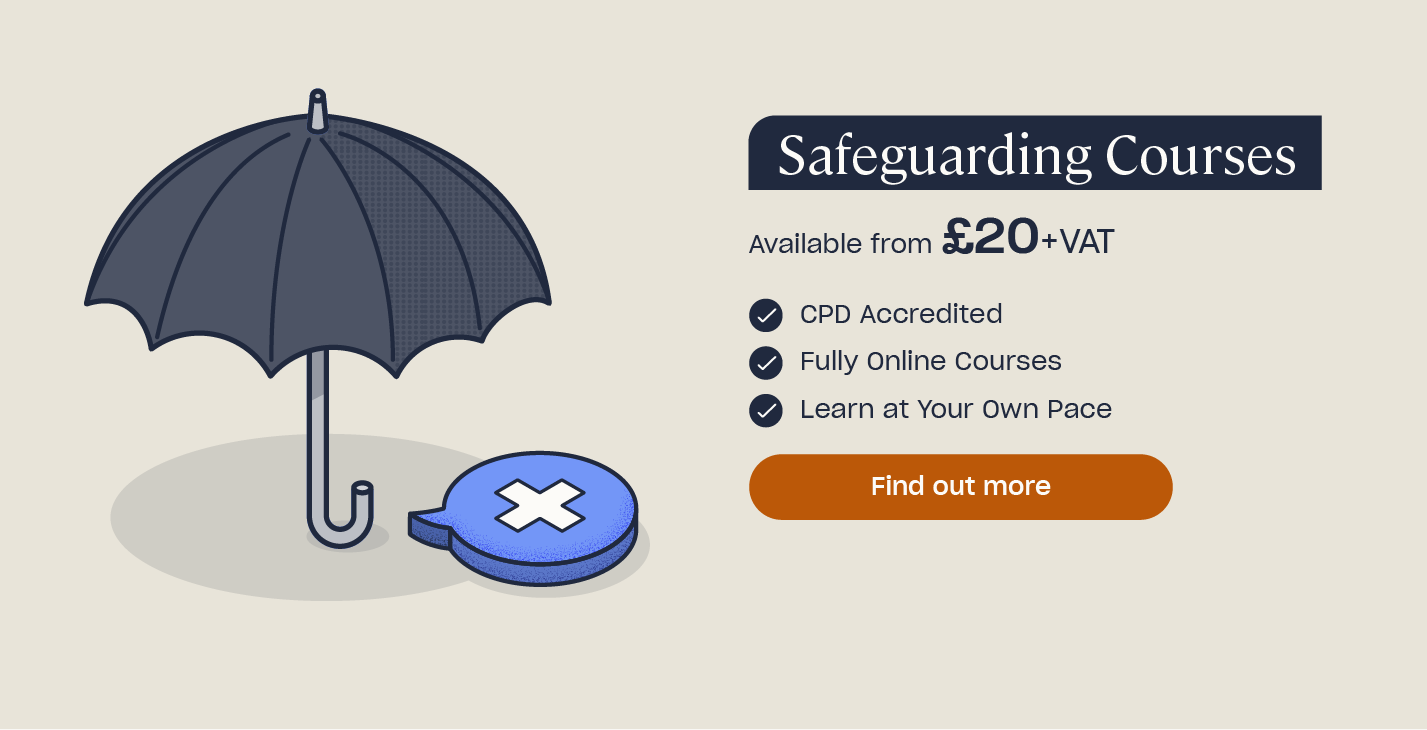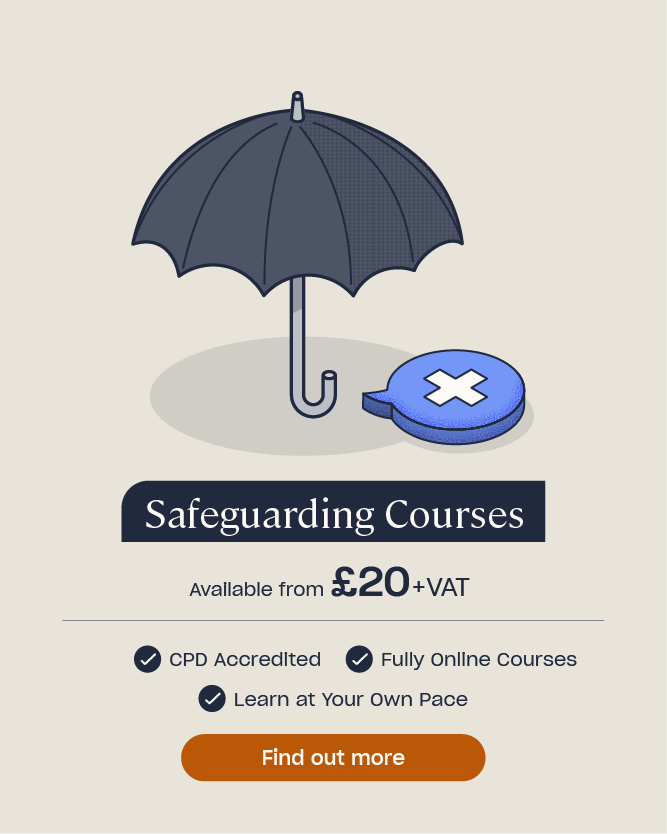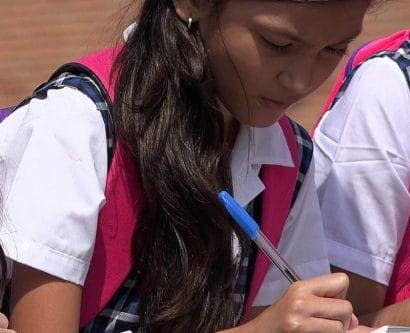Guidance on the Levels of Need in Safeguarding
When working with children or young people, safeguarding their health, development and wellbeing should always be your number one priority. This means identifying the support each individual child needs so you can tailor your care appropriately and refer them to the right support services at the right time. In this article, we’ll look at what the levels of need in safeguarding refer to, what each level of need covers and explain what’s included in a threshold document.

Why are the Levels of Need Important in Safeguarding?
Everyone who works with children has a responsibility to safeguard them from harm and must collaborate with other agencies and services in order to spot concerns and provide the right level of support based on their individual needs.
Working Together to Safeguard Children guidance expresses the importance of using a child-centred approach to identifying problems and providing early help. The earlier we are able to recognise potential child protection issues, the more effective the support will be at keeping the child safe and well.
The levels of need are an important part of these responsibilities, as they provide a clear structure for everyone involved with the child to follow, ensuring we’re all on the same page, following the same guidelines and putting the child’s needs at the heart of everything we do.
What are the Levels of Need?
All children and young people need support of some kind, whether it’s with their healthcare, physical activity or schooling. However, some children and their families need additional support to enable the child to reach their full potential and stay safe and healthy.
The levels of need are part of a framework that helps professionals to identify the additional support a child and/or their family requires. The levels of need are often described as part of a continuum, with the number and types of services needed increasing as the levels go up. You may also see it presented as a ‘windscreen’ model.

There are four levels of need that apply to, and have been agreed by, all types of agencies. Children may experience a different level of need at different times in their lives, and may move up and down the levels as their needs change. They are unlikely to remain static at one level.
The four levels of need are:
Level 1 – No Additional Needs (Universal Services)
All children and young people receive support from Universal Services throughout their lives, such as health visitors, GPs, teachers and youth groups, and will grow up living a happy and healthy life without any additional needs. The aim of Universal Services is to work with families to ensure children are able to learn, develop and achieve their full potential without needing any further input or support, as all their health and developmental needs are being met by the services that are provided to everyone. Children at level 1 with no additional needs are also receiving adequate child-focused care and love from their parents/carers.
Level 2 – Early Help
Children at level 2 may be showing signs of vulnerability, abuse and/or neglect but it’s currently unclear as to what their needs are. You may be unsure as to what their situation is or concerned about whether they’re receiving the support they need in relation to their health, development, education or social skills.
At this level, a multi-agency Early Help Assessment is needed to identify which additional services the child and their family should be provided with. If the concerns are ignored, then it’s likely that they’ll escalate into something worse.
Level 3 – Complex Needs (Children in Need)
Children at level 3 require specialist services and intervention in order to maintain their health or development – whether that’s due to abuse and/or neglect or because of a disability, for example. The support the child needs may be long-term and, without it, the child’s health and development is likely to be significantly impaired.
Children at level 3 are known as Children in Need under Section 17 of the Children Act 1989 and require the local authority to undertake a statutory assessment of need. It may be that an Early Help Assessment has already been completed but the results were unsuccessful.
Level 4 – Acute Needs (Children in Need of Protection)
Children at level 4 are those who are identified as suffering, or likely to suffer, significant harm and are already experiencing abuse and/or neglect and have reached the threshold for child protection procedures. These children have acute needs and require specialised, targeted services.
Children at level 4 should be immediately referred to Children’s Social Care under Section 47 of the Children Act 1989, and also to the Police if appropriate. Follow your setting’s safeguarding children policy, as this will provide you with guidance on how to handle these types of situations. Our guide on Safeguarding Children Legislation also provides more information.
Threshold Document
Each Local Safeguarding Children Partnership (LSCP) has its own threshold document that provides professionals with information on the different levels of need. The document usually includes:
- A description of each level of need.
- Examples of indicators to look out for at each level of need.
- What to do next if you identify that a child needs further support.

The threshold document should be used alongside other safeguarding procedures and will help you to determine what type of support a child and their family requires. Note that the examples given for each level are just examples, not definite indicators, and it’s important to talk to the child, their family and others involved with the child to gain a full understanding of their needs. Holding a Team Around the Family meeting and developing a collaborative plan can be a good way to share information and develop a better understanding of what support is needed.
There are four levels of need in safeguarding that all professionals working with children need to be aware of. The levels of need describe what level of help and support children and their families need based on their circumstances and are contained within your LSCP’s threshold document. Ensure you’re familiar with your own local threshold document, as understanding the levels of need is an important part of your safeguarding duty.
Further Resources:
- Safeguarding Courses
- Safeguarding Children Legislation: Guidance for Schools
- How to Create an Effective Culture of Safeguarding in Schools











